A Brief Guide to Puppy Development Stages by Weeks

Puppyhood is a turbulent period of a dog’s life. Full of drastic changes in cognitive skills, growth spurts, and developmental stages, this time brings excitement and challenges into pet owners' lives.
Equipping yourself with knowledge about puppy stages is critical to navigating all maturing phases and providing a solid foundation for proper puppy development. Let’s follow a puppy timeline together and learn more about your furry friend’s development.
Stage 1. Neonatal Phase
The neonatal stage lasts from birth to 2 weeks and is characterized by extreme dependence on their mother. Like other canines, puppies are born with their ear canals and eyes closed. They also can’t regulate their body temperature properly. Such helplessness serves the evolutionary purpose of keeping the pups close to their mother in a den and protecting them from predators.
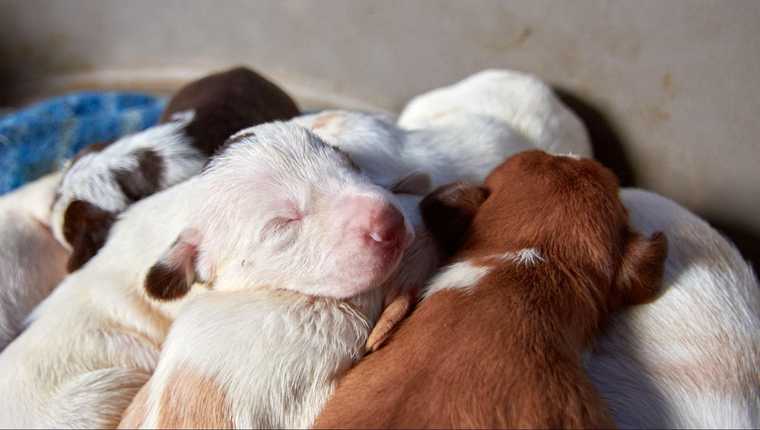
At the end of the phase, pups’ eyes start to open, but their eyesight is still imperfect. They depend on their mothers for cleanliness, food, and care. Little by little, the puppies begin crawling, recognizing their mother and litter mates, and developing a sense of taste and touch.
Such gradual development leads to slow integration into the family or with other dogs, and puppies start to receive their first training from the mother dog.
Key takeaways of Neonatal stage:
- Hearing and eyesight are underdeveloped
- No independent body temperature regulation
- Elimination with the help of the mother
- Crawling starts at the end of the stage
Stage 2. Transitional Phase
The next stop on the puppy timeline is the transitional stage, which lasts 2 to 4 weeks. During this period, pups gain more body control and undergo rapid sensory development. Still, they rely significantly on their mother, so it's essential to keep them close to one another.
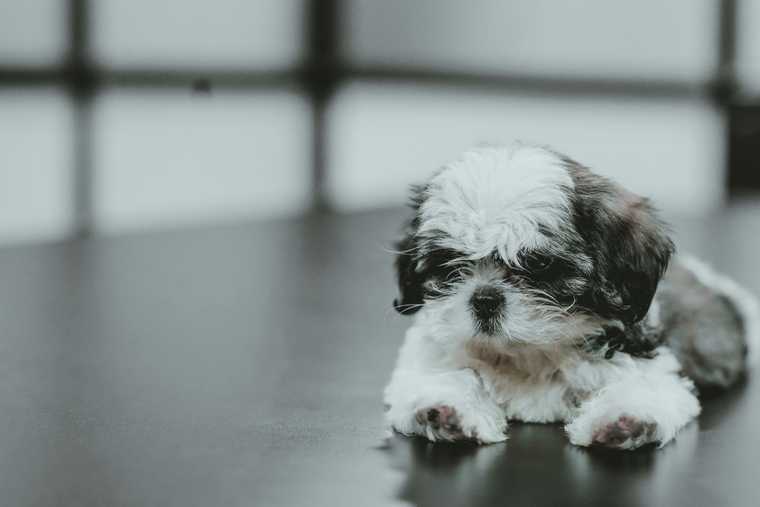
One of the significant puppy milestones reached at this phase is elimination without stimulation. They also get more independent as they start walking better and can satisfy their curiosity about their environment, thanks to rapid sight and hearing development. This stage is pure joy for humans caring for a young puppy's life as they can observe their littermates and explore a big new world.
Key takeaways of Transitional stage:
- Start of sensory development
- Form a bond with the mother
- Independent elimination
- Walking, standing, wagging tail, and interacting with littermates
Stage 3. Primary Socialization
At 3–4 weeks, puppy growth is incredible. Finally, you can see them behaving like adult dogs. They also start barking and playing with each other. They might make messes, but this stage is vital for sensory development and teaching pups about pain. This is when pups learn how social cues function, such as a mother dog’s bite inhibition.
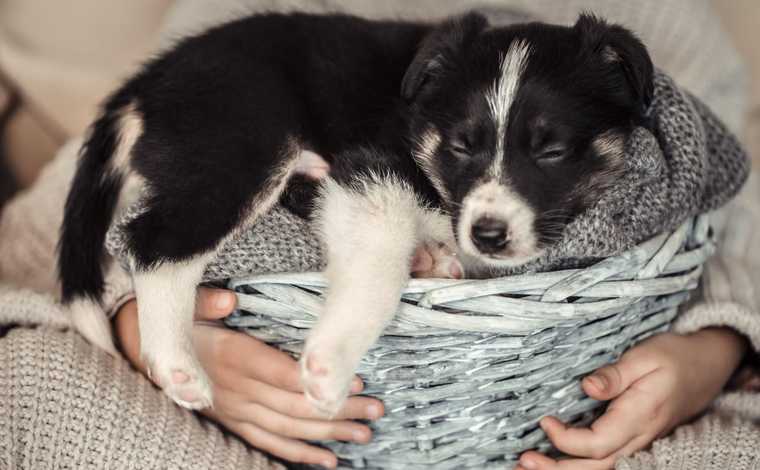
At this age, a puppy is exposed to various sounds and stimuli. Vacuum cleaners, dryers, and washing machines can scare them due to their loud noises. However, exposing them to such objects is vital to gradually reducing their anxiety and teaching them that these everyday parts of our lives are safe.
It's also the time when you start seeing baby teeth. Those teeth will take a few weeks to develop fully, but they can bite their littermates playfully. Though still far from weaning, the growth of puppy teeth marks their transition to the **first chewing phase **and eventual switch to solids.
Key takeaways of Primary socialisation:
- Sensory development continues
- Start playing with littermates
- Start of teething and the first chewing phase
Stage 4. Socialization Phase
This lasts 3 to 12 weeks and is one of the most critical stages of puppy development. In fact, this stage determines future puppy behavior and their ability to integrate into their families.
Traumatic experiences at this phase can have a long-lasting impact on a dog’s mental health and behaviors as they develop a sense of fear. However, proper early socialization helps puppies become confident, reduces fear and anxiety, improves social skills, prevents behavior issues, makes vet and grooming visits easier, strengthens the bond with owners, and leads to a well-adjusted adult dog.

Other puppy milestones during this period include transitioning to solids, developing the ability to bond with owners, and potty training. After consulting a vet and choosing the appropriate schedule, you should also start deworming and vaccinating a puppy. This schedule will depend on vaccine regulations in your area.
Bonding with others
Right after birth, puppies primarily focus on their mother and other dogs. However, when they reach the socialization stage, things change. Humans become their figures of attachment, forming a precious bond with their owners.
It’s essential to provide puppies with plenty of opportunities to meet new people and other animals to reduce the risk of developing fearful behaviors in the future. If you introduce your pup to other dogs, ensure the contacts are safe, and you interact with vaccinated pets only. When meeting different people, you can start handling the pup so that they get used to being touched and carried by humans.
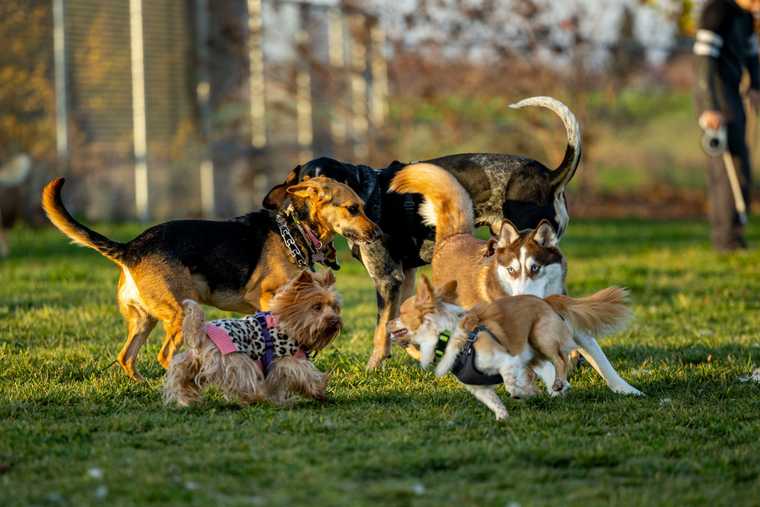
Key takeaways of Socialisation period:
- Start interacting with canines and humans
- Form a bond with the owner
- Fears appear
- Transition to solid food
- Time to start vaccination
Stage 5. Juvenile (Pre-Adolescent) Phase
Dogs are group animals who form social relationships with members of their pack. Between 3 and 6 months, they establish their social status within the group hierarchy. Your previous efforts in socializing your dog will start to pay off, and they will gain social skills and confirm their ranking status among littermates.
Around this age, puppies transition to their permanent adult teeth. You can expect more vigorous chewing and other disruptive behaviors that owners will want to correct. Start using positive reinforcement, offering praise and rewards for desired behaviors. You will successfully train your dog to exhibit proper behavior with practice and patience.
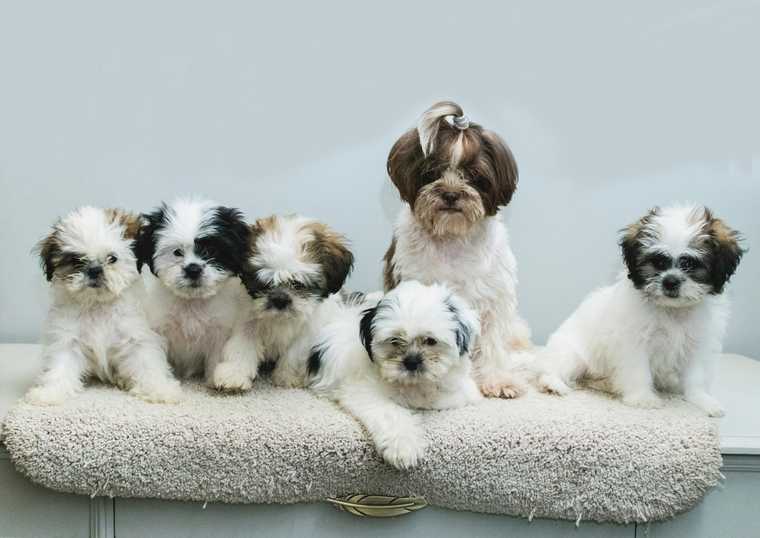
How does hierarchy in dogs work?
The growing body of evidence suggests that there’s a correlation between a dog’s personality and their hierarchical relationship with other pets.
However, canines don’t have a linear hierarchy, and the idea of the alpha male in the pack has become outdated. Dogs’ relationships are determined by their desire to keep peace and get a specific resource. Overall, they prefer to avoid conflicts and confrontation.
Key takeaways of Juvenile stage:
- Social skills and established hierarchy with their littermates
- Transition to permanent teeth
- Time to start training
Stage 6. Teenagers
Teenagers are known for being curious, independent, and rebellious. From 6 to 18 months, adolescent puppy displays the same personality traits and behavioral tendencies. With their hormones running wild, teenage puppies continue to test your boundaries and display a range of bad habits.
It’s vital to stay consistent with your household's rules and offer your teenage furry companion stable routines, playtime, and training opportunities. You will see your pet gradually developing emotional maturity, and they will eventually gain better control over their emotions.
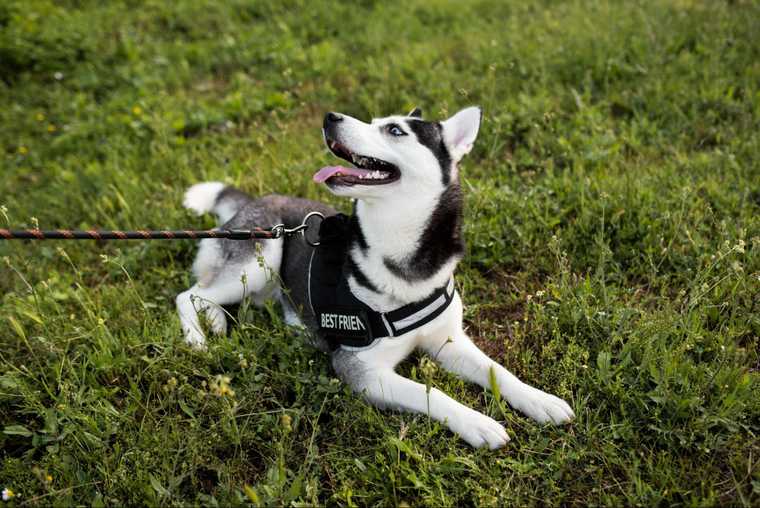
The importance of neutering/spaying
When puppies reach sexual maturity, many owners face the dilemma of whether to spay/neuter them. The procedure has numerous benefits and is generally accepted, especially with shelter pets. It reduces the risk of reproductive tract diseases and helps avoid unwanted matting-related behavior and urine marking.
However, recent studies suggest that spaying and neutering dogs of certain large breeds can cause health complications. That’s why you should consult a vet to determine all the risks and benefits of the procedure. The appropriate timing of the medical intervention can also vary.
Key takeaways of Adolescent stage:
- Sexual maturity
- Emotional maturity
- Time to spay/neuter the dog (if needed)
Stage 7. Adulthood
The age at which a canine reaches adulthood varies depending on size, sex, and breed. Male dogs are typically larger and are believed to reach maturity earlier. Small breeds are considered adults as early as 12 months, while giant breeds can develop fully in 18 to 24 months.
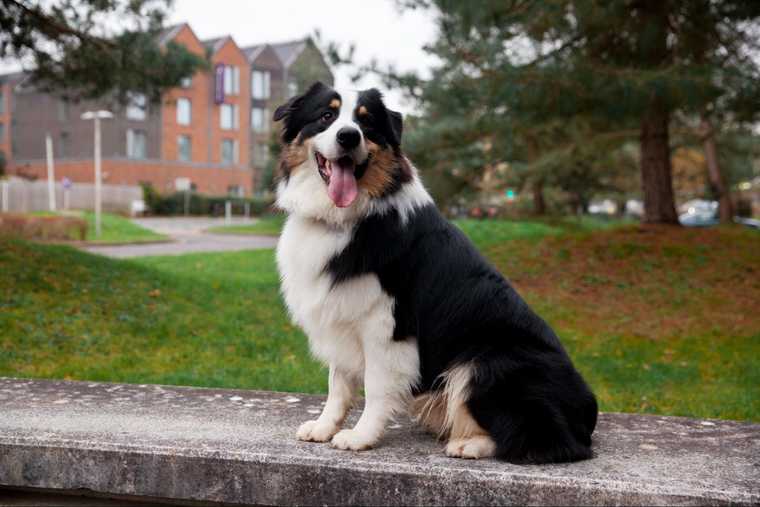
Young adolescent dogs finish developing all their body systems and organs. They're still active and full of energy but show better impulse control. They also start to exhibit dominant or submissive behavior depending on their hierarchical rank and cooperate more easily with humans.
Key takeaways of Adulthood stage:
- All body systems are developed
- Social rank is established
- Better impulse control
Puppy Fear Periods
We can’t talk about puppy ages and stages and miss such an essential topic as emotional development. Dogs reach emotional and cognitive maturity through two distinct fear periods. Getting fearful is a normal part of puppy growth, though some owners can be caught off guard.
So why is your pup suddenly scared of everything?
First fear period
This occurs around 8–11 weeks and is often when a puppy adjusts to a new home. No wonder, this time can be overwhelming for a young dog. To help your new furry companion adapt better to your household and overcome fears, create a stable and safe environment and avoid experiences that can be scary or threatening, or patiently and slowly work them through with positive reinforcement!
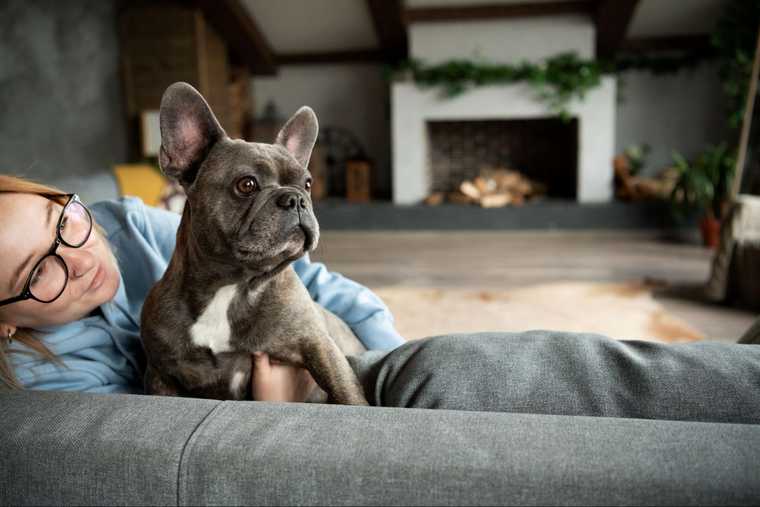
Second fear period
The exact time a dog experiences a second wave of fear depends on their breed. It happens between 6 and 14 months. Even though your dog can look like an adult, remember their brain is still rapidly developing. Don’t pressure your pup into interacting with objects they're scared of, but praise and reward them for things like looking at that object.
Note: Check our guide to learn more about typical dogs’ fears and phobias, which can help your pet cope better.
Why You Need to Know Puppy Development Stages by Weeks?
Bringing a young dog into your life is an exciting and joyous experience. However, it also makes your life more challenging. In a way, caring about a puppy resembles caring about a human child. You must be there for new milestones, fears, challenges, and questionable behaviors.
Knowing what to expect can ease your anxiety around dog care and make cooperating with a new family member easier. You will also be able to ensure proper vet and dietary care, which are cornerstones of development. Meeting your pet’s needs guarantees a fulfilling life together.
Wrap Up
Accompanying a pup on their way to becoming an adult dog is an exciting adventure. Arm yourself with the proper knowledge about age-appropriate canine development to help and support your furry friend. Remember to enjoy all phases of puppy development, as this experience is unique and valuable.
Frequently Asked Questions

Passionate team dedicated to help pet owners raise safe and obedient dogs, fostering meaningful connections with their furry companions.

CPDT-KA certified trainer with over 4 years of experience working with hundreds of dog owners.